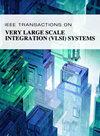利用重新配置的 CFB 模式提高 AES 设计的抗功率攻击能力
IF 2.8
2区 工程技术
Q2 COMPUTER SCIENCE, HARDWARE & ARCHITECTURE
IEEE Transactions on Very Large Scale Integration (VLSI) Systems
Pub Date : 2024-07-11
DOI:10.1109/TVLSI.2024.3422501
引用次数: 0
摘要
高级加密标准(AES)用于确保物联网(IoT)硬件上通信过程的安全。它可通过各种 128 位模式实现,如电子密码本 (ECB)、密码块链 (CBC)、密码反馈 (CFB)、输出反馈 (OFB) 和计数器 (CTR),以促进数据的并行处理。从物理设备上获取机密信息的功率分析攻击(PAA)具有非侵入性的特点,这使得此类硬件对对手来说并不安全。同时,对上述模式的安全性评估仍然模糊不清,而本作品正是对此进行了新的尝试。此外,本研究还提出了一种新颖的 64 位 CFB 模式,与其他模式和几种未受保护的 AES 设计相比,它具有最高的安全性。PAAs 在采用 UMC 65-nm 技术节点的 ASIC 平台和使用侧信道攻击安全评估板(SASEBO)的硬件实验装置上进行,均以 16-MHz AES 频率和 1 GSa/s 的采样率进行跟踪。拟议的 CFB-64 所提供的披露测量值(MTD)大于 1 000 000,大大超过了普通无保护 AES 设计所提供的测量值。在其他模式中,它还能提供最高的 MTD、最小的信噪比(SNR)和互信息(MI),这表明它具有最高的安全性。所提出的 CFB-64 与无保护 AES 集成后,可起到反制作用。本文章由计算机程序翻译,如有差异,请以英文原文为准。
Improvement in Resilience of AES Design With Reconfigured CFB Mode Against Power Attacks
Advanced encryption standard (AES) is used to secure the communication process on the Internet-of-Things (IoT) hardware. It is implementable in various 128-bit modes, such as electronic code book (ECB), cipher block chaining (CBC), cipher feedback (CFB), output feedback (OFB), and counter (CTR), to facilitate parallel processing of data. The noninvasive nature of power analysis attacks (PAAs) to retrieve secret information off a physical device renders such hardware to be unsafe from the adversaries. Also, the assessment of the aforementioned modes for security remains obscured, which is undertaken by this work as a novel attempt. In addition, this work proposes a novel 64-bit version of CFB mode, which provides the highest security with respect to other modes and several unprotected AES designs. PAAs are performed on ASIC platform utilizing UMC 65-nm technology node and a hardware experimental setup using side-channel attack security evaluation board (SASEBO), both at 16-MHz AES frequency and traces sampled at the rate of 1 GSa/s. The measurements to disclose (MTDs) of >1 000 000 provided by the proposed CFB-64 are significantly more than that provided by usual unprotected AES designs. It also offers the highest MTD, and least signal-to-noise ratio (SNR) and mutual information (MI) among other modes, indicating the highest security. The proposed CFB-64 acts as a countermeasure upon integration with an unprotected AES.
求助全文
通过发布文献求助,成功后即可免费获取论文全文。
去求助
来源期刊
CiteScore
6.40
自引率
7.10%
发文量
187
审稿时长
3.6 months
期刊介绍:
The IEEE Transactions on VLSI Systems is published as a monthly journal under the co-sponsorship of the IEEE Circuits and Systems Society, the IEEE Computer Society, and the IEEE Solid-State Circuits Society.
Design and realization of microelectronic systems using VLSI/ULSI technologies require close collaboration among scientists and engineers in the fields of systems architecture, logic and circuit design, chips and wafer fabrication, packaging, testing and systems applications. Generation of specifications, design and verification must be performed at all abstraction levels, including the system, register-transfer, logic, circuit, transistor and process levels.
To address this critical area through a common forum, the IEEE Transactions on VLSI Systems have been founded. The editorial board, consisting of international experts, invites original papers which emphasize and merit the novel systems integration aspects of microelectronic systems including interactions among systems design and partitioning, logic and memory design, digital and analog circuit design, layout synthesis, CAD tools, chips and wafer fabrication, testing and packaging, and systems level qualification. Thus, the coverage of these Transactions will focus on VLSI/ULSI microelectronic systems integration.

 求助内容:
求助内容: 应助结果提醒方式:
应助结果提醒方式:


